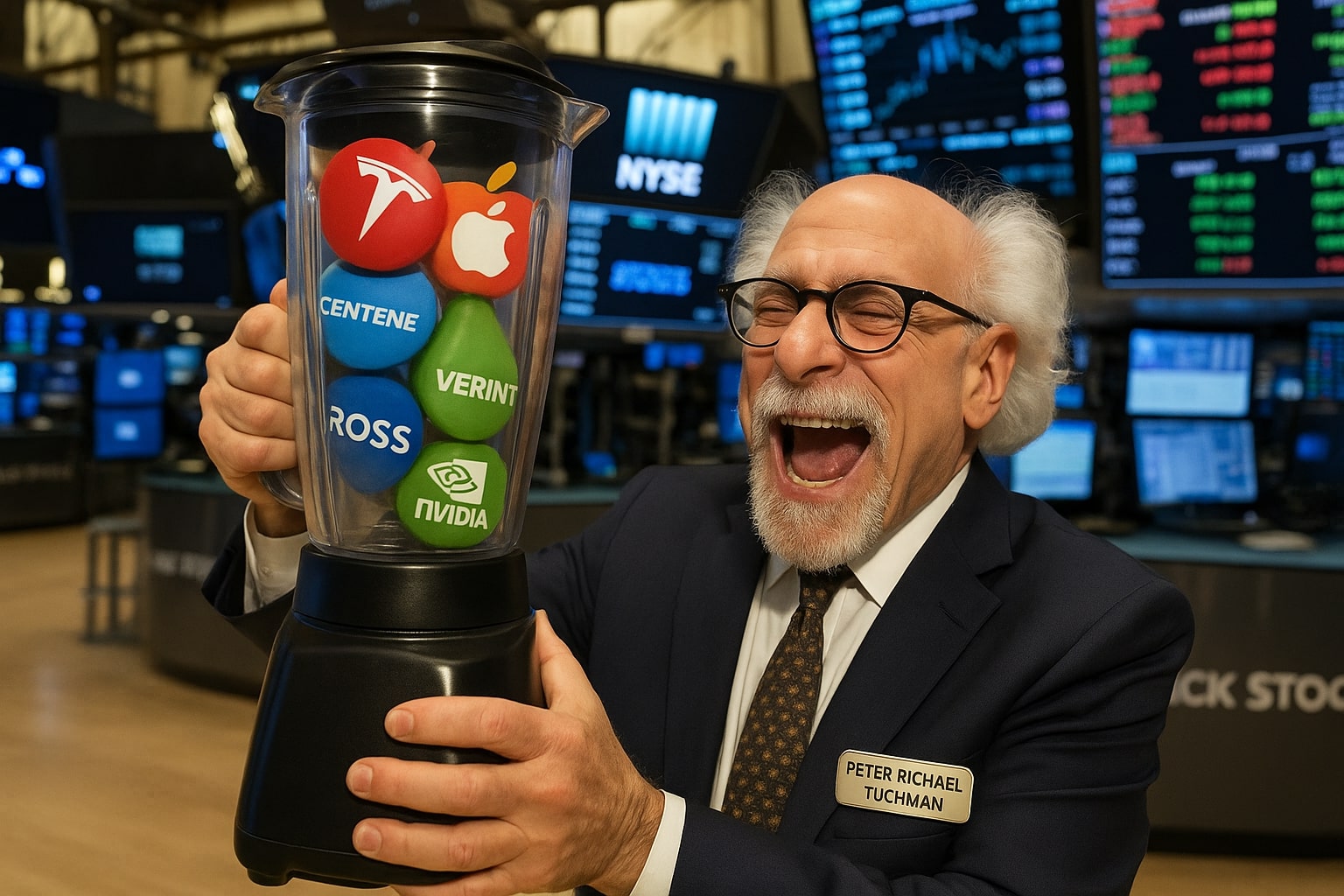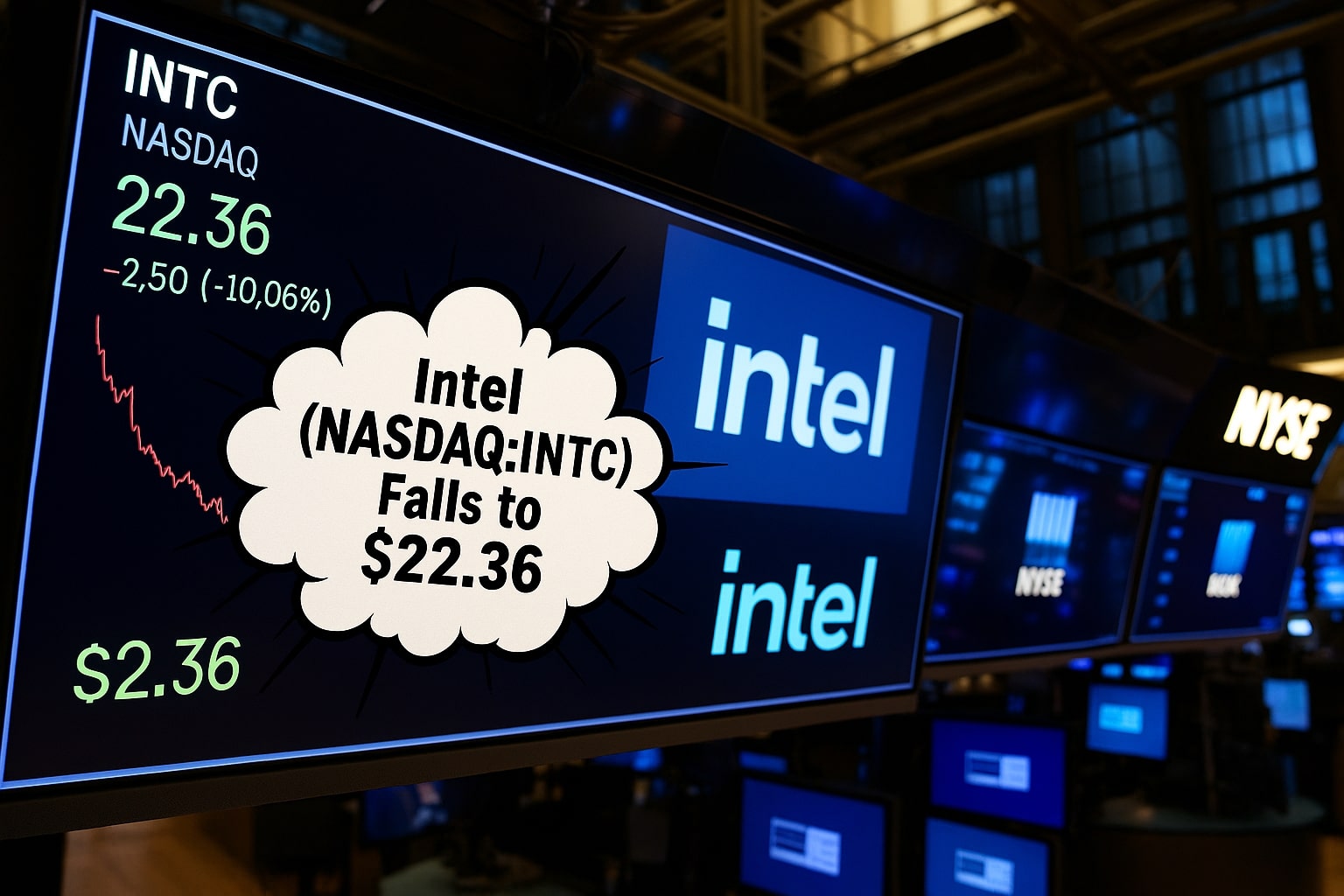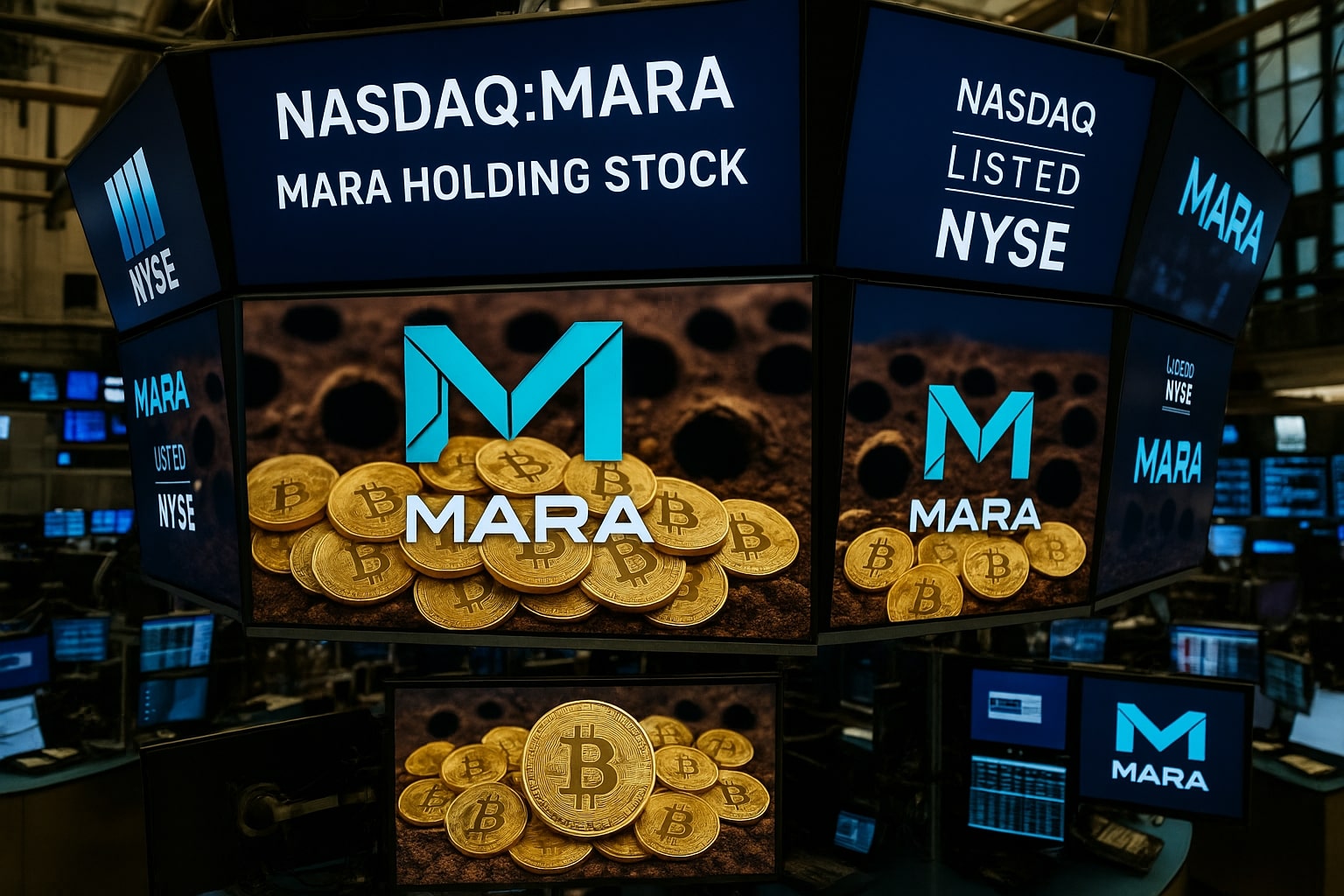
Stock Market Reacts to Jobs Shock: Nasdaq Leads, Tesla Surges, Dow Slips
Nasdaq climbs 0.7%, driven by Tesla and Apple. S&P 500 flashes golden cross. Stock market eyes Fed cut as jobs data craters. Dow dragged by insurers | That's TradingNEWS
Nasdaq, S&P 500, and Dow Diverge as Trump Tariff Drama and Jobs Collapse Collide
Markets split sharply Wednesday as political risk and economic deterioration collided across sectors. The Nasdaq Composite soared 0.7%, powered by a sharp rotation back into tech following Trump’s announcement of a trade accord with Vietnam. The S&P 500 eked out a 0.2% gain, bolstered by a fresh golden cross technical breakout. But the Dow Jones Industrial Average remained flat to slightly negative as weakness in healthcare stocks weighed on the broader value-heavy index.
The Nasdaq’s strength came from renewed bullish flows into megacap names like Apple (AAPL), Nvidia (NVDA), and Tesla (TSLA). Tech now appears to be reasserting leadership just as the broader rally faces resistance from deteriorating economic data. The S&P 500’s golden cross—where the 50-day moving average overtakes the 200-day—has historically preceded gains in 9 out of the last 11 instances, suggesting the bull market may still have legs. But even that optimism is tempered by the worst private payroll data in over two years.
Private Payrolls Collapse by 33,000 in June, Igniting Rate-Cut Fever
In a stunning surprise, ADP data showed U.S. private employers cut 33,000 jobs in June, far below expectations for a +98,000 increase. This was the first monthly job loss since March 2023, sending bond yields lower and spiking futures on rate cut bets. May’s payrolls were also downwardly revised to just 29,000.
Markets immediately priced in a higher probability of Fed action. According to CME FedWatch, odds of a July rate cut rose to 25%, up from 20% the prior day. And analysts now believe the Fed is watching the labor market far more closely than inflation—particularly after Powell stated rate cuts would already be in play if not for “tariff-related uncertainties.” With job creation crumbling, the Fed’s hands may be forced regardless of CPI.
The slowdown was most evident in professional and business services, where layoffs were concentrated. Leisure and hospitality posted minor gains, but the underlying message is clear: hiring managers have frozen.
Trump's Vietnam Tariff Deal Triggers Risk-On Tech Rotation
President Trump ignited a tech bid after declaring a new trade deal with Vietnam, under which Vietnamese exports will face a 20% tariff, while the U.S. will receive full market access to Vietnamese sectors. Investors took the news as a signal that the administration may avoid all-out tariff wars—at least for now.
The reaction was immediate. The Nasdaq hit its intraday high shortly after Trump’s announcement. Semiconductor stocks jumped. Apple (AAPL) rose 2.1% to $212.21, while Nvidia (NVDA) added 2.56%, reclaiming momentum after a short pullback from its recent $157.99 all-time high. The Trump-Vietnam agreement arrived just a week before the July 9 tariff-pause deadline, with looming threats still targeting Japan and Europe if trade terms aren’t reached.
Markets may be rallying now, but there’s risk under the surface. Trump’s language around “spoiled trading partners” and his refusal to extend the July deadline indicates volatility is far from over.
Tesla (TSLA) Rips Higher on Better-than-Feared Q2 Production Numbers
Despite widespread doubt, Tesla (TSLA) shares ripped 3.4% higher to $310.94 after the EV maker reported Q2 deliveries of 384,122 vehicles, below the 389,407 consensus but well ahead of Q1’s 336,681. Production surged to 443,321 units, up from 410,800 a year earlier. It marked the second straight quarterly delivery decline, but investors embraced the lower bar amid broader tech outperformance.
Tesla’s gains also reflect an easing of political drama. Following Musk’s public feud with Trump earlier in the week—blaming the administration for targeting EV subsidies—the company’s focus returned to fundamentals. But not all was clean: Tesla’s new robotaxi tests in Austin faced backlash after videos showed vehicles violating traffic laws, including crossing double-yellow lines.
The broader Tesla story remains in limbo. International demand is patchy: sales dropped for a sixth straight month in France and Sweden, while Spanish and Norwegian registrations ticked up—signs that the revamped Model Y may be finding a foothold.
Apple (AAPL) Rallies as iPhone Sales Rebound in China; AI Strategy Under Scrutiny
Apple stock rose 2.1% following an upgrade by Jefferies, which cited a 15% YoY jump in global iPhone sales in April and May, and a 19% rise in Chinese shipments. These numbers represent the strongest pace since Q3 2021, fueled by targeted subsidies and consumer anticipation ahead of potential tariffs.
Still, doubts linger. The upcoming iPhone 17 launch is expected to underwhelm, with analysts pointing to a lack of hardware innovation and underwhelming AI integration. Apple's flirtation with outside LLMs like Anthropic and OpenAI for the next generation of Siri suggests internal AI capabilities are still catching up to rivals like Meta and Microsoft.
Apple’s YTD stock performance remains in the red—down 17%—as investors struggle to justify its $3.1 trillion valuation against lagging product differentiation.
Centene (CNC) Crashes 39% After Yanking 2025 Forecasts, Warns of ACA Fallout
Centene (CNC) shares imploded 39% to $34.51, after management scrapped its 2025 earnings outlook, citing lower ACA marketplace enrollment and sicker-than-expected signups. The insurer now expects a $1.8 billion shortfall in federal reimbursements, with EPS projected to fall $2.75 below consensus.
This is the latest bombshell in the collapsing health insurance trade. The news echoes UnitedHealth (UNH) pulling its guidance weeks earlier. Now CVS (down 2%), Elevance Health (ELV, -9%), and Oscar Health (OSCR) are under pressure as the entire sector reevaluates its risk models.
Centene’s credibility is in crisis. What began as a Medicaid enrollment adjustment has escalated into a multi-billion-dollar miscalculation. And with Trump’s new tax-and-spending bill proposing $1 trillion in Medicaid cuts, the long-term picture looks even worse for managed care.
Ross Stores (ROST) Upgraded to Buy: 15% Upside Targeted Despite Tariff Noise
Ross Stores (ROST) rose nearly 2% premarket after Jefferies raised its price target to $150, implying 15% upside. Analysts see opportunity in margin recovery and refinement of better-tier brands, especially within women’s apparel.
The valuation gap between ROST and peers has widened this year, with the stock down 14% YTD, making the retailer a relative bargain if comps stabilize. Jefferies anticipates EBIT expansion in 2025, even as tariff costs potentially pressure gross margins.
Verint (VRNT) Soars 12% on Buyout Chatter from Thoma Bravo
Verint Systems (VRNT) surged 11.2% in after-hours trading following reports that Thoma Bravo is in advanced talks for a buyout. Though no formal offer has emerged, speculation is lifting sentiment on the struggling software vendor, whose shares have slumped 32% YTD.
Private equity appetite for undervalued midcaps in tech is intensifying. If a deal materializes, Verint could be valued at a substantial premium, especially given its lingering SaaS transition and cash flow challenges.
Short Sellers Burned for $300 Billion Since April Bottom, Led by NVDA and TSLA
Since the market bottomed on April 8, short sellers have lost $300 billion, or 22%, as S&P 500 and Nasdaq surged 24% and 33%, respectively. The biggest losers? Nvidia, Tesla, and Microsoft, where gains have punished bears. Tech, consumer discretionary, and industrials account for over $180B of the short losses alone.
Conversely, the best-performing shorts came in UnitedHealth, Sarepta, and Bristol-Myers, all of which fell on sector-specific catalysts. Despite losses, overall short interest is up 10.5% YTD, or $139 billion, as traders rotate into higher-beta bets.
Europe: Sabadell Spikes on Santander’s $3.1B TSB Deal, BBVA Reels on Bid Discount
Banco Sabadell surged 5% after agreeing to sell its UK unit TSB to Santander for €3.1B, potentially rising to €3.4B. The market read the deal as a clear win for shareholders, who now see Sabadell’s valuation above BBVA’s bid price—casting doubt on BBVA’s hostile offer.
Santander shares gained 1.5%, and BBVA rose modestly despite facing pressure to raise its offer. BBVA’s previous premium has flipped into a 10% discount, and any sweetened bid may now face resistance from tax-averse shareholders.
Sabadell also committed to returning €3.8B to investors if the deal is finalized, including €2.5B in direct distributions post-transaction.
Buy, Sell, or Hold? Final Verdict
-
Nasdaq (^IXIC): BUY – Momentum is intact; tech strength outweighs macro drag.
-
S&P 500 (^GSPC): HOLD – Golden cross and Fed rate cut potential support upside, but employment weakness looms.
-
Dow (^DJI): SELL – Defensive and insurance exposure is dragging; rotation favors growth.
-
Tesla (TSLA): HOLD – Stronger production is promising, but deliveries miss and brand risk cap near-term upside.
-
Apple (AAPL): HOLD – China sales rebound is bullish, but AI concerns cloud long-term catalyst strength.
-
Centene (CNC): SELL – Fundamental outlook deteriorated dramatically; management credibility shaken.
-
Ross Stores (ROST): BUY – Valuation gap, margin recovery, and upgraded outlook support upside.
-
Verint (VRNT): HOLD – Speculative M&A upside but weak core performance.
-
NVDA: BUY – Despite volatility, AI cycle keeps valuations justified in the near term.
















